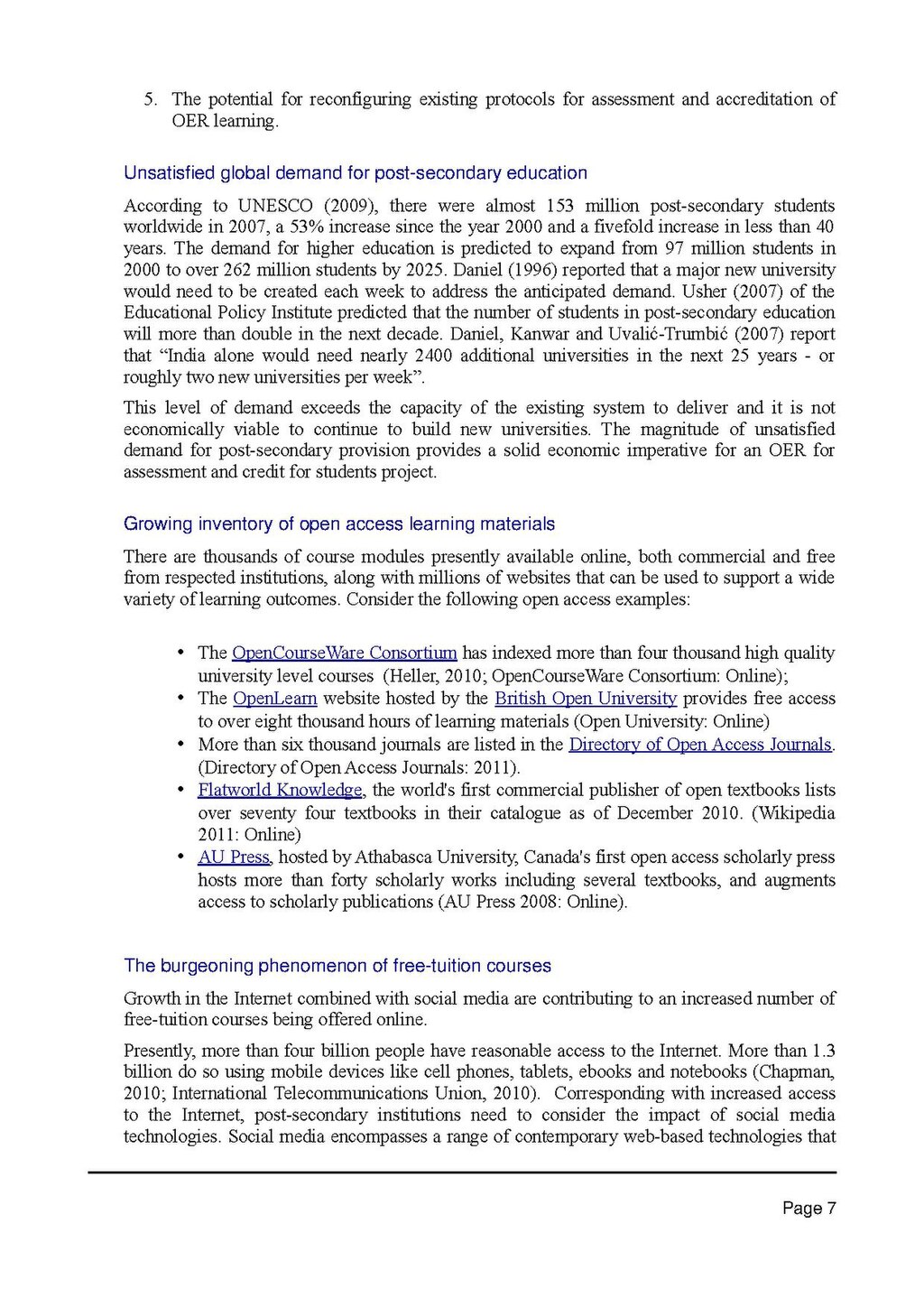- The potential for reconfiguring existing protocols for assessment and accreditation of OER learning.
Unsatisfied global demand for post-secondary education
According to UNESCO (2009), there were almost 153 million post-secondary students worldwide in 2007, a 53% increase since the year 2000 and a fivefold increase in less than 40 years. The demand for higher education is predicted to expand from 97 million students in 2000 to over 262 million students by 2025. Daniel (1996) reported that a major new university would need to be created each week to address the anticipated demand. Usher (2007) of the Educational Policy Institute predicted that the number of students in post-secondary education will more than double in the next decade. Daniel, Kanwar and Uvalić-Trumbić (2007) report that "India alone would need nearly 2400 additional universities in the next 25 years - or roughly two new universities per week". This level of demand exceeds the capacity of the existing system to deliver and it is not economically viable to continue to build new universities. The magnitude of unsatisfied demand for post-secondary provision provides a solid economic imperative for an OER for assessment and credit for students project.
Growing inventory of open access learning materials
There are thousands of course modules presently available online, both commercial and free from respected institutions, along with millions of websites that can be used to support a wide variety of learning outcomes. Consider the following open access examples:
- The OpenCourseWare Consortium has indexed more than four thousand high quality university level courses (Heller, 2010; OpenCourseWare Consortium: Online);
- The OpenLearn website hosted by the British Open University provides free access to over eight thousand hours of learning materials (Open University: Online)
- More than six thousand journals are listed in the Directory of Open Access Journals. (Directory of Open Access Journals: 2011).
- Flatworld Knowledge, the world's first commercial publisher of open textbooks lists over seventy four textbooks in their catalogue as of December 2010. (Wikipedia 2011: Online)
- AU Press, hosted by Athabasca University, Canada's first open access scholarly press hosts more than forty scholarly works including several textbooks, and augments access to scholarly publications (AU Press 2008: Online).
The burgeoning phenomenon of free-tuition courses
Growth in the Internet combined with social media are contributing to an increased number of free-tuition courses being offered online.
Presently, more than four billion people have reasonable access to the Internet. More than 1.3 billion do so using mobile devices like cell phones, tablets, ebooks and notebooks (Chapman, 2010; International Telecommunications Union, 2010). Corresponding with increased access to the Internet, post-secondary institutions need to consider the impact of social media technologies. Social media encompasses a range of contemporary web-based technologies that
